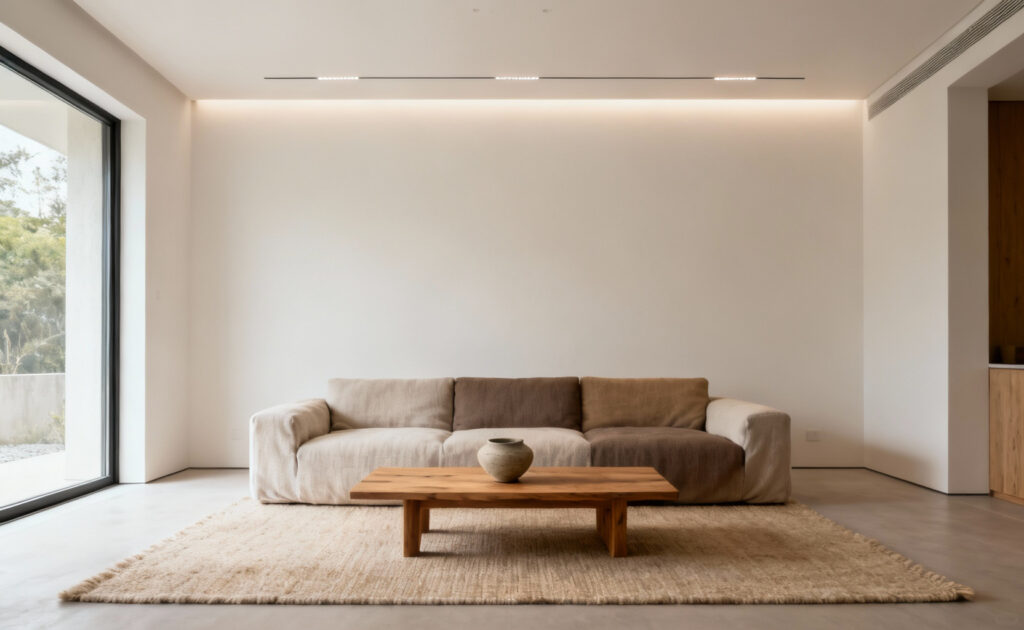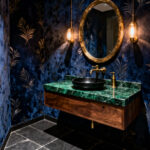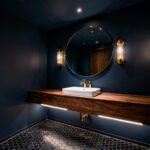Designing a home is fundamentally an act of self-revelation—every choice reflects not just aesthetic preference, but deeper values about how life should be lived. The most compelling modern living room ideas aren’t simply decorated; they are authored. They tell a coherent story about who we are and who we aspire to be, crafting a sanctuary that nurtures our well-being from the inside out. This is about moving beyond the surface to create a space that promotes a state of flourishing—what the ancient Greeks called eudaimonia.
As a wellness design consultant, I guide people to understand that their living room isn’t a passive backdrop. It’s an active ecosystem influencing everything from stress levels to sleep quality. We’re not just arranging furniture; we’re choreographing experiences. This is about conscious design—an intentional practice of crafting environments that support our physical and mental health. These 20 principles are designed to help you separate a space that feels authentically nourishing from one that simply looks polished, empowering you to create a living room that truly heals.
Philosophical Anchor: Cultivating Intentionality for Holistic Well-being
Before we place a single piece of furniture, we must start with intention. The foundation of a truly modern, wellness-focused living room isn’t built on trends, but on a philosophy of living. This first set of ideas explores the essential mindsets that transform a room from a collection of objects into a resonant sanctuary, a space that is not just seen, but deeply felt.
1. Embracing the “Slow Living” Aesthetic
This is more than minimalism; it’s a conscious rebellion against the culture of accumulation. Slow living is about prioritizing presence over possessions. It means curating a room where every object either serves a genuine purpose or brings you profound joy. Years of mindful space planning have taught me that this approach does more than clear a room—it clears the mind. When we design for intention rather than impression, the space itself encourages us to breathe deeper.
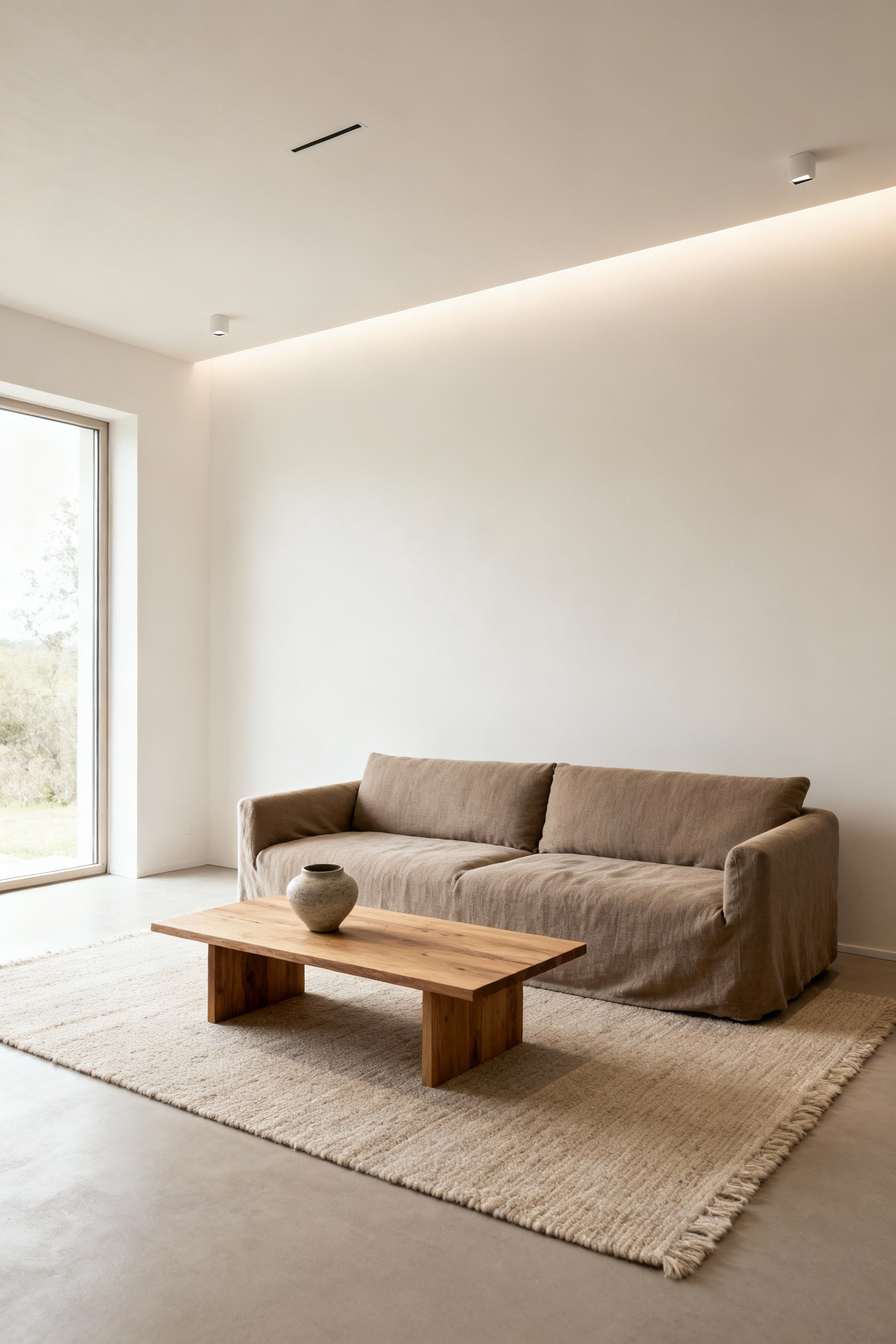
The science backs this up. A home described as “cluttered” has been linked to higher levels of the stress hormone cortisol. By contrast, a restful, intentionally curated space lowers cognitive load and reduces mental fatigue. This isn’t about stark emptiness. It’s about creating visual quiet, allowing the beauty of a few well-crafted, meaningful pieces to truly resonate. It’s the difference between a room that demands your attention and one that gives you space to find your own.
2. Integrating Biophilic Principles
We have an innate, biological need to connect with nature—a concept known as biophilia. Integrating this principle is about weaving the patterns, materials, and living elements of the natural world into your home to foster a sense of serenity. It goes far beyond simply placing a fiddle-leaf fig in the corner. It’s about thinking how light filters through trees and replicating that with dappled lighting, or using natural materials like unsealed wood and rough-hewn stone to engage our sense of touch.
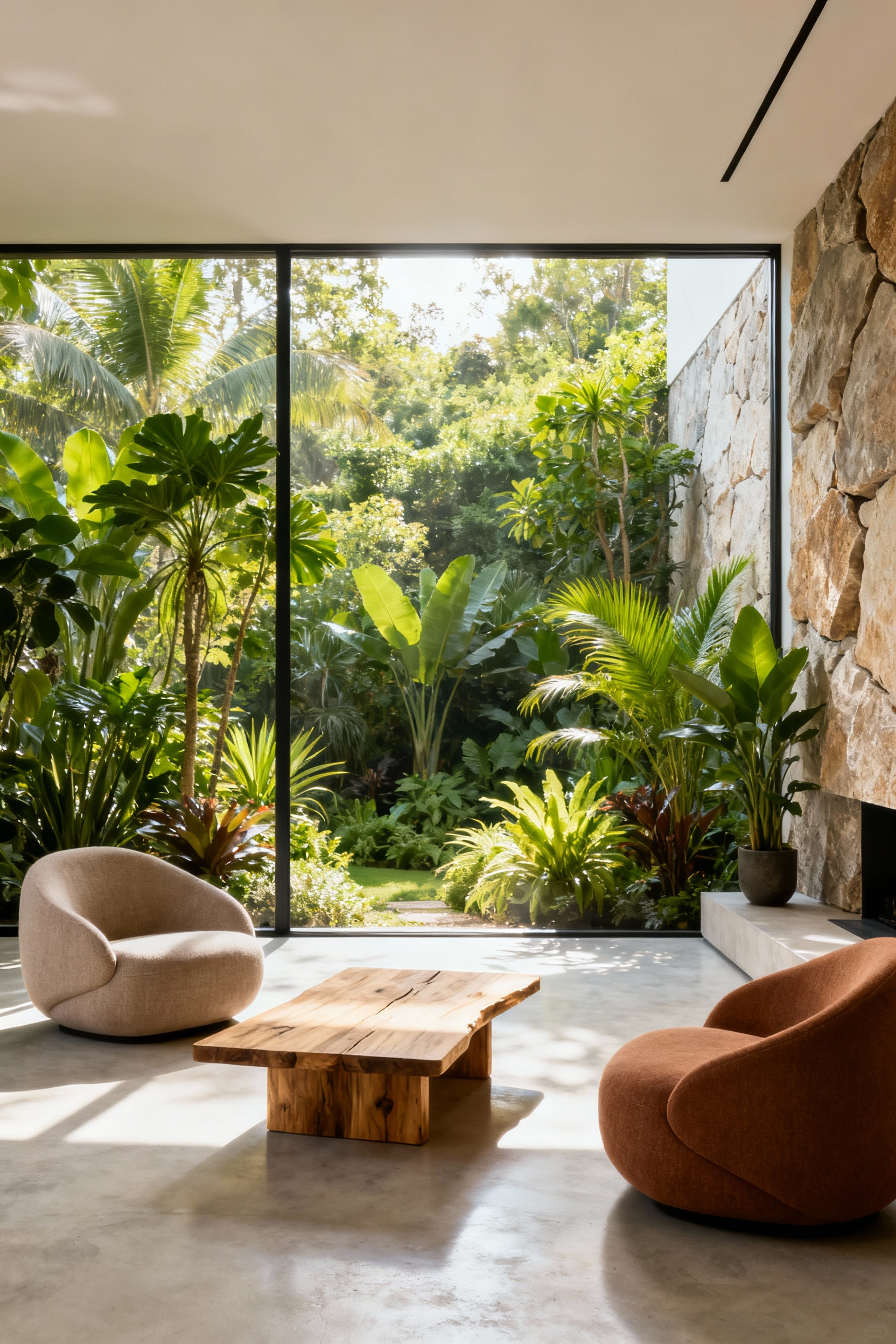
The benefits are remarkable. Access to natural light and views of greenery can reduce stress, lower blood pressure, and improve focus. Even incorporating biomimetic patterns—forms and textures that mimic nature—can have a restorative effect. In my wellness design practice, I’ve seen this play out time and again. A client who felt anxious in her starkly modern living room found immediate relief when we introduced a water feature for gentle sound and replaced a glass table with a live-edge wood slab. The room didn’t just look different; it felt fundamentally calmer.
3. Harmonizing Energetic Flow
You don’t need to be a Feng Shui master to understand that the layout of a room affects how you feel. Harmonizing flow is about creating clear, intuitive pathways for movement that eliminate subconscious stress. Think about how you walk through the space. Are you constantly navigating around a clunky coffee table or squeezing past an armchair? These small, daily frictions create a low-grade sense of irritation and impede a feeling of ease.
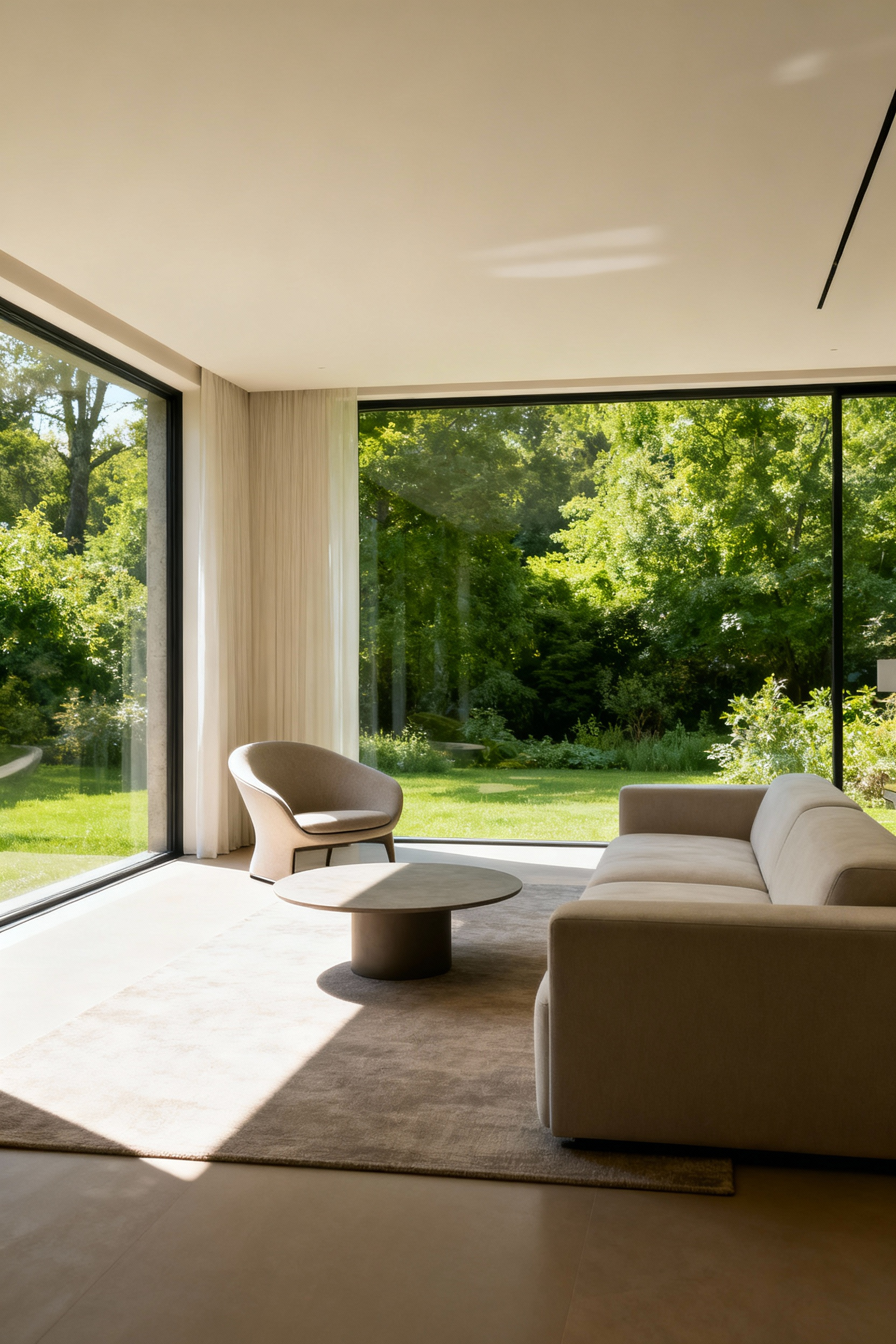
A well-designed layout promotes vitality and calm by allowing energy—and people—to move without obstruction. Creating distinct “zones” for conversation, reading, and relaxation helps give the room a sense of purpose and order. A critical aspect I focus on in Mindful Space Planning is ensuring the main seating area feels protected and commanding—often with a solid wall behind it—rather than floating vulnerably in the middle of a room. This simple adjustment can transform a space from feeling precarious to feeling like a true sanctuary.
4. Sculpting a Multisensory Experience
We perceive our environment through all our senses, yet so often, design focuses exclusively on the visual. A truly holistic living room engages touch, sound, and even scent to create a rich, immersive experience. It’s the soft texture of a wool bouclé sofa, the solid coolness of a marble accent table, the sound-dampening quality of a thick, natural-fiber rug, and the subtle, calming aroma of essential oils like cedar or lavender.
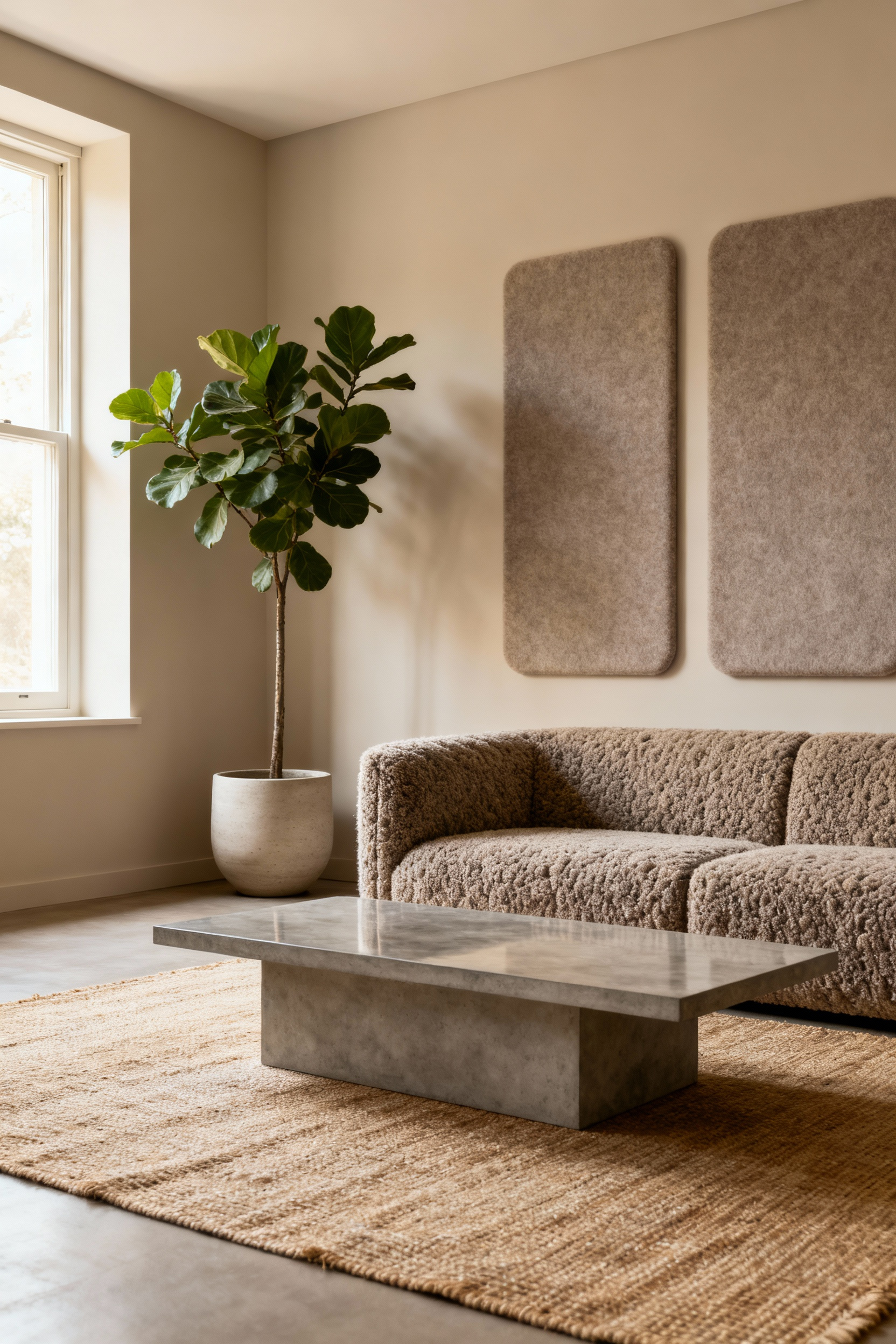
I’ve noticed that layering these sensory elements is what makes a room feel genuinely luxurious and comforting. You can start by conducting a “sensory audit” of your space. Does it sound echoey and harsh? Introduce soft textiles. Does it feel visually cold? Bring in warm, natural materials. By consciously curating the auditory, tactile, and olfactory dimensions of your room, you create a space that supports your nervous system and provides a deep, embodied sense of comfort.
5. Defining Your Personal Sanctuary
Ultimately, your living room should be a reflection of your inner world—your values, your purpose, your story. This goes beyond displaying photos. It’s about architecting a space that supports the person you are and the person you want to become. Ask yourself: what is the primary purpose of this room for me? Is it a place for quiet contemplation, vibrant social connection, creative expression, or restorative calm? The answer should guide every decision.
A home that feels like a sanctuary is one where the design choices are in alignment with the inhabitants’ core needs. In my practice, I often start by helping clients define their “wellness pillars”—things like connection, creativity, or peace. Then we translate those pillars into tangible design elements. For a client who valued mindfulness, we created a dedicated corner with a comfortable floor cushion, soft lighting, and a place for her journal, integrating her daily ritual into the very fabric of the room. Your home becomes a true sanctuary when it feels like an extension of your truest self.
Material Exploration: A Curated Symphony of Form, Texture, and Light
The materials we choose are the building blocks of our sensory experience. They are what we touch, what we see, and what reflects light back to us. Exploring materials with a wellness lens means looking beyond aesthetics to consider their origin, their health impact, and their ability to create a tactile narrative that is both sophisticated and deeply grounding.
6. Opting for Sustainable, Healthy Terrains
The materials that surround us have a direct impact on our health. Many conventional building materials and furnishings off-gas volatile organic compounds (VOCs) that can compromise indoor air quality and lead to health issues. Opting for ethically sourced and regenerative materials is a commitment to both planetary and personal well-being. This means choosing solid wood with FSC certification, paints with a zero-VOC label, and textiles certified by GOTS or OEKO-TEX.
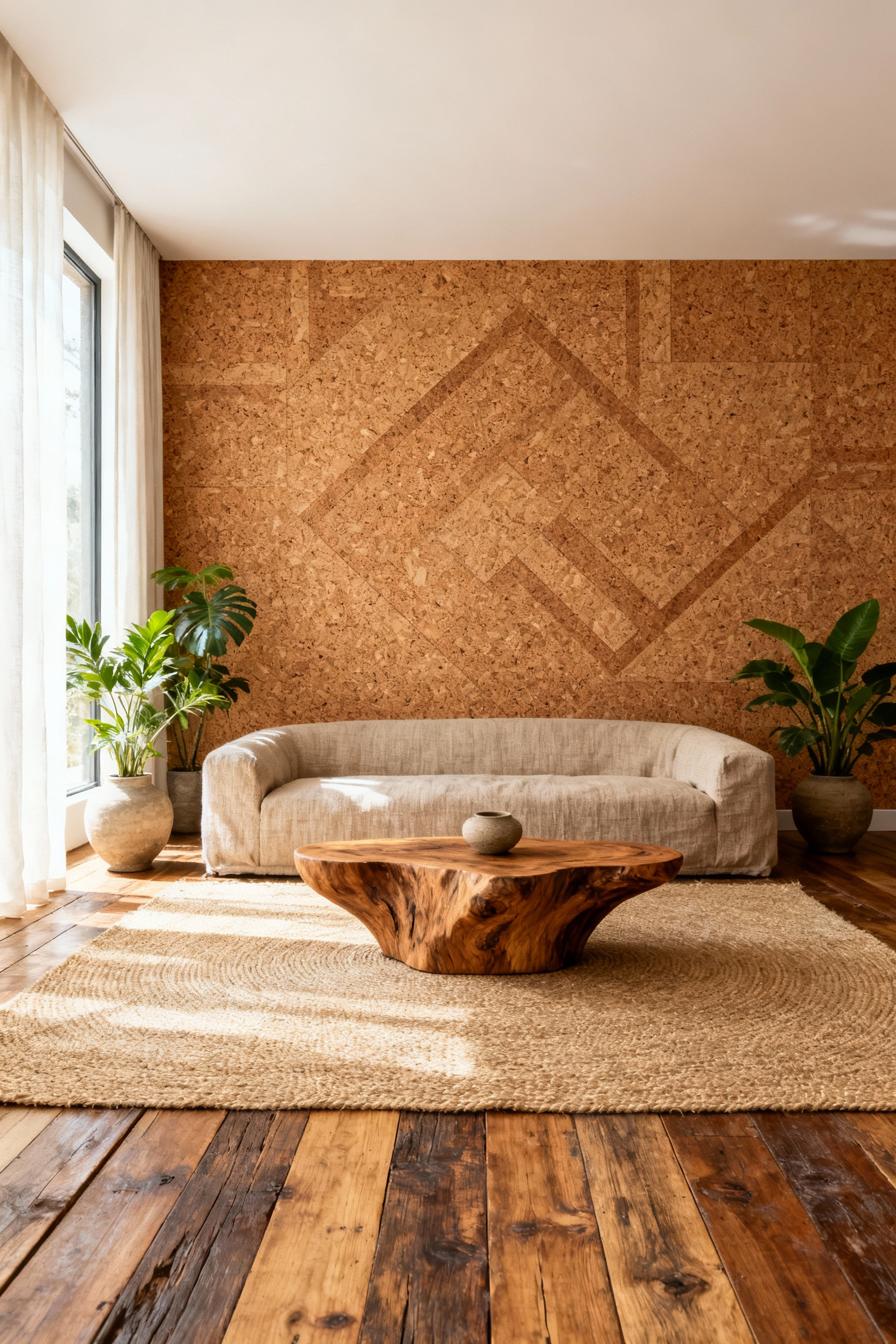
What I tell my clients is to think of their home’s material palette like the food they eat. You want clean, whole, and nourishing ingredients. From my work with healthy home materials, I’ve learned that natural materials like cork (which is antimicrobial), wool (a natural air purifier), and solid wood have inherent wellness benefits. Choosing these materials creates a space that is not only safer but also connects us back to the natural world in a tangible, grounding way.
7. Elevating the Tactile Narrative
A sophisticated modern space invites touch. Layering a rich variety of textures is key to creating depth, warmth, and a sense of indulgent comfort. Think of the interplay between a smooth, cool concrete floor, a nubby linen sofa, a plush velvet cushion, and a hand-knotted wool rug. Each surface tells a different story and elicits a different feeling. This haptic engagement grounds us in our bodies and in the present moment.
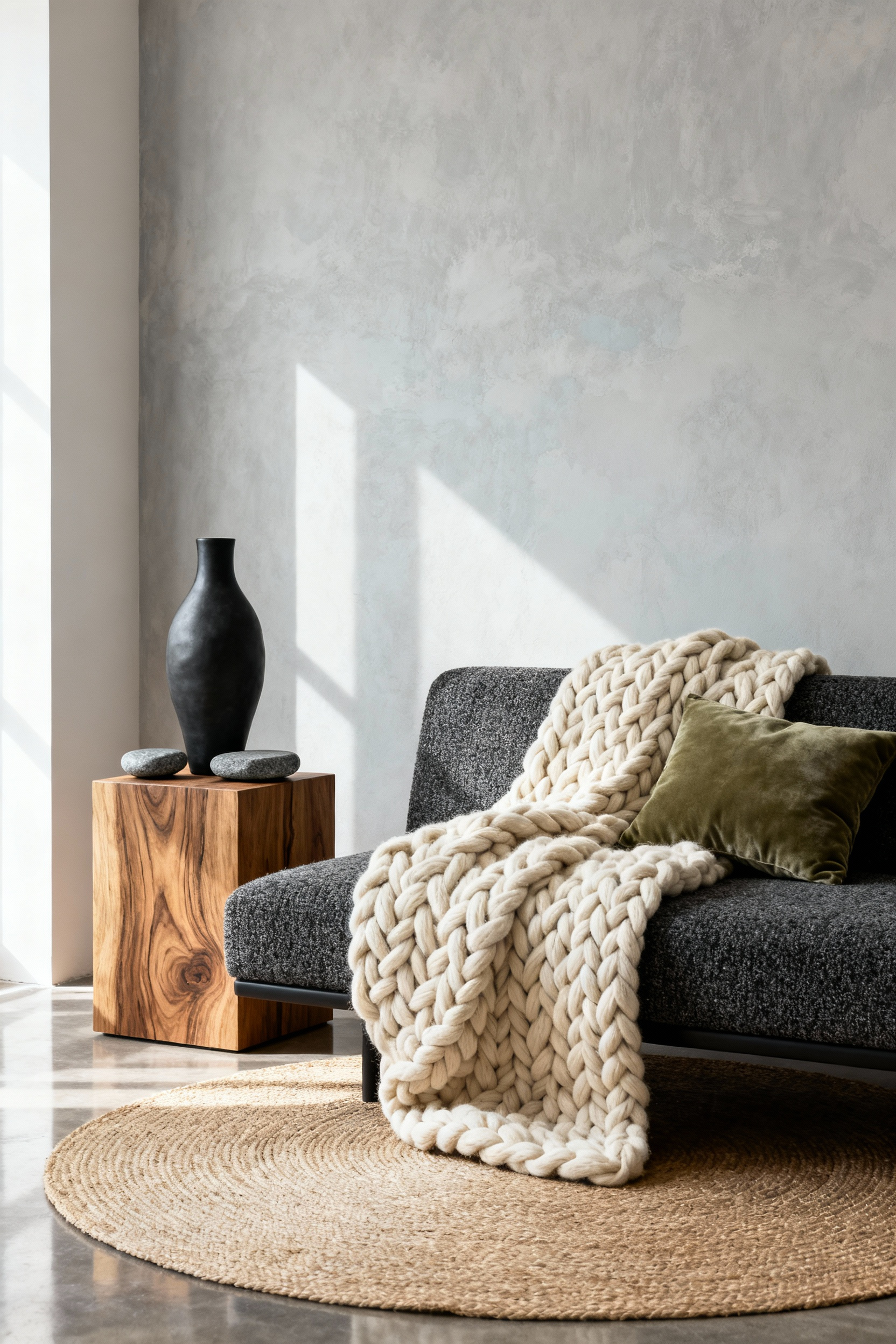
One of the most common mistakes I see in minimalist interiors is a failure to layer texture, which can leave a room feeling sterile and uninviting. The solution isn’t to add clutter, but to enrich the existing surfaces. Consider a limewash paint for its soft, chalky texture or a raw silk curtain that catches the light in a unique way. It’s this careful curation of tactile experiences that elevates a room from simply looking good to feeling incredible.
8. Mastering a Monochromatic Palette
Working within a monochromatic palette is not about creating a boring, one-note room. It’s a sophisticated exercise in nuance and restraint. By deploying subtle variations of a single hue—from deep charcoal to pale dove grey, for instance—you can create a space that is incredibly serene and visually expansive. The lack of jarring color contrast reduces cognitive load and has a deeply calming effect on the nervous system.
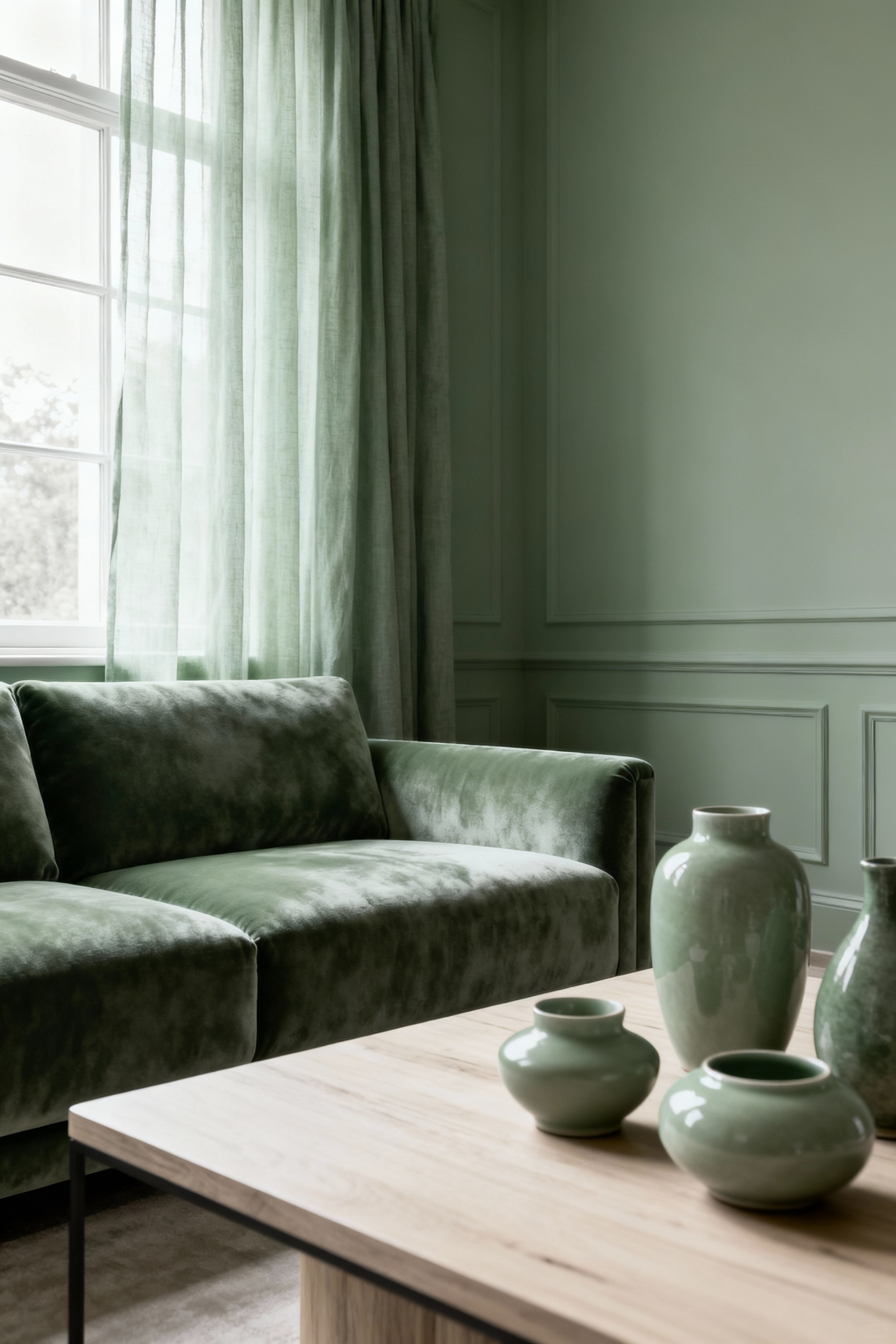
The key to a successful monochromatic room is a heavy emphasis on texture and form. When color is restrained, the subtle textures of different materials become the star. A matte wall, a glossy accent, a chunky knit throw, and a smooth leather chair can all exist within the same color family, creating a rich, layered composition that is both dynamic and deeply restful. It proves that tranquility doesn’t have to be bland.
9. Illuminating with Purpose
Light is arguably the most powerful tool in wellness design. A strategic, layered lighting plan can shape mood, define functional zones, and support our natural circadian rhythms. A single, harsh overhead light creates a flat, uninviting space. Instead, think in layers: ambient light for overall illumination (like recessed fixtures or a central pendant), task light for specific activities (a reading lamp by a chair), and accent light to create mood and highlight features (like art lights or uplighting a plant).
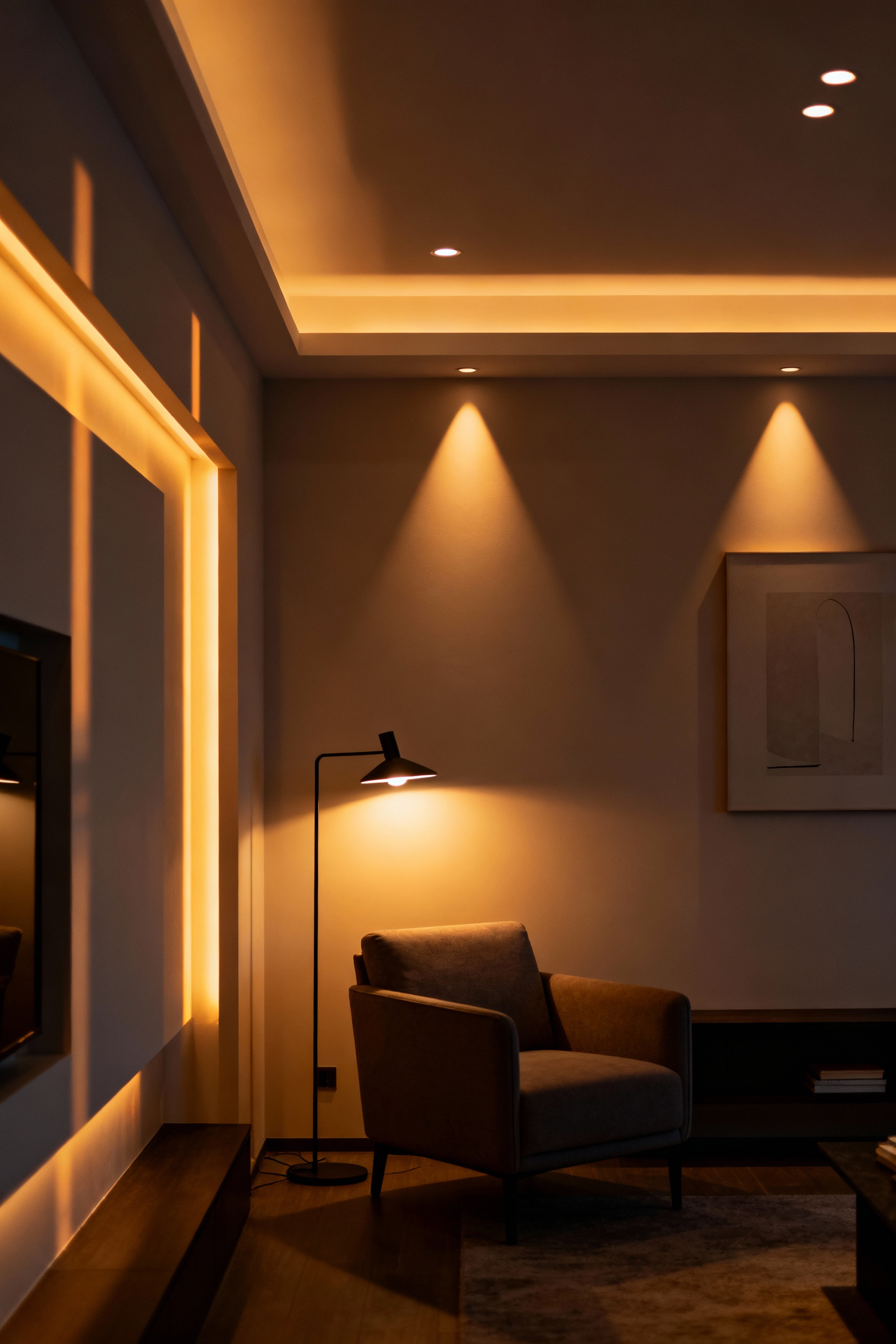
In my professional experience, the most impactful change you can make is implementing dimmers on every switch. This gives you complete control over the atmosphere, allowing the space to transition from bright and energizing during the day to soft and intimate in the evening. Even better is using tunable LED lighting that can shift from cool blue-toned light in the morning to warm amber light at night, mirroring the sun’s natural cycle and promoting healthier sleep patterns.
10. Incorporating Biomorphic Forms
Nature rarely moves in straight lines. Biomorphic forms—curved, organic shapes inspired by living things—introduce a softening, humanizing element to the clean lines of modern design. A sofa with a gently rounded back, a kidney-shaped coffee table, or an amoeba-like area rug can break up the rigidity of a space and create a more inviting, natural flow. Our brains are hardwired to respond positively to these forms, as they mimic the shapes we find in nature.
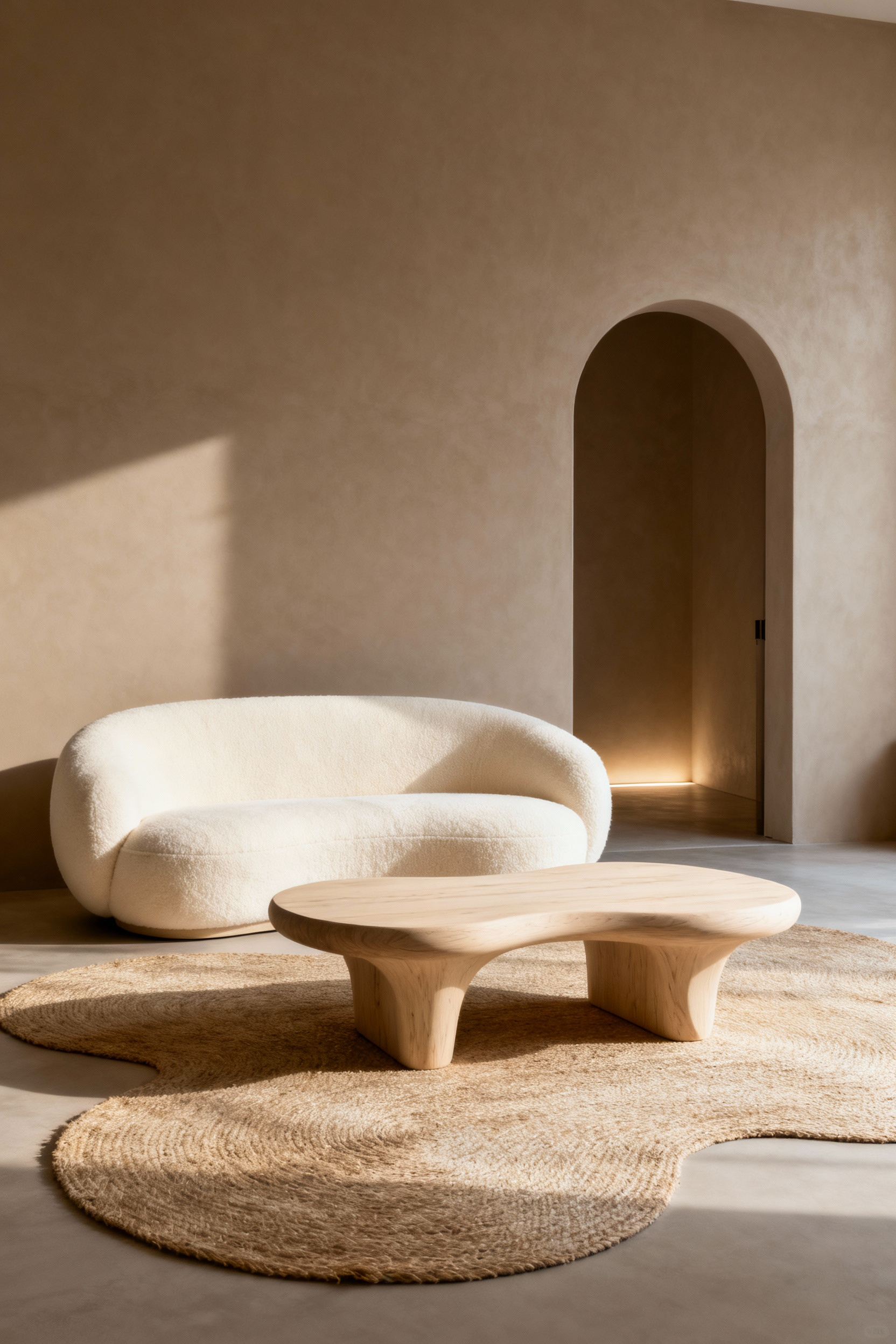
I learned this when working on a very angular, contemporary apartment that felt more like a gallery than a home. The introduction of a single sculptural armchair with dramatic curves and a round, oversized ottoman completely changed the energy of the room. It provided a point of visual softness and immediately made the space feel more comfortable and less intimidating. These organic shapes invite relaxation and a sense of ease.
Spatial Application: Dynamic Architectures for Adaptive Living
How we arrange our space is as important as what we put in it. Modern living is fluid and ever-changing, and our homes should be able to adapt. These principles focus on the architectural application of wellness design, exploring how to create layouts that are flexible, promote flow, and support the varied rhythms of daily life.
11. Deconstructing Fixed Boundaries
Open-plan living isn’t just a trend; it’s a reflection of our desire for connection, light, and flexibility. By deconstructing fixed walls, we create a sense of expansive freedom and allow natural light to penetrate deeper into the home. This visual continuity can reduce feelings of confinement and foster a greater sense of togetherness, as different activities can coexist within a shared, flowing space.
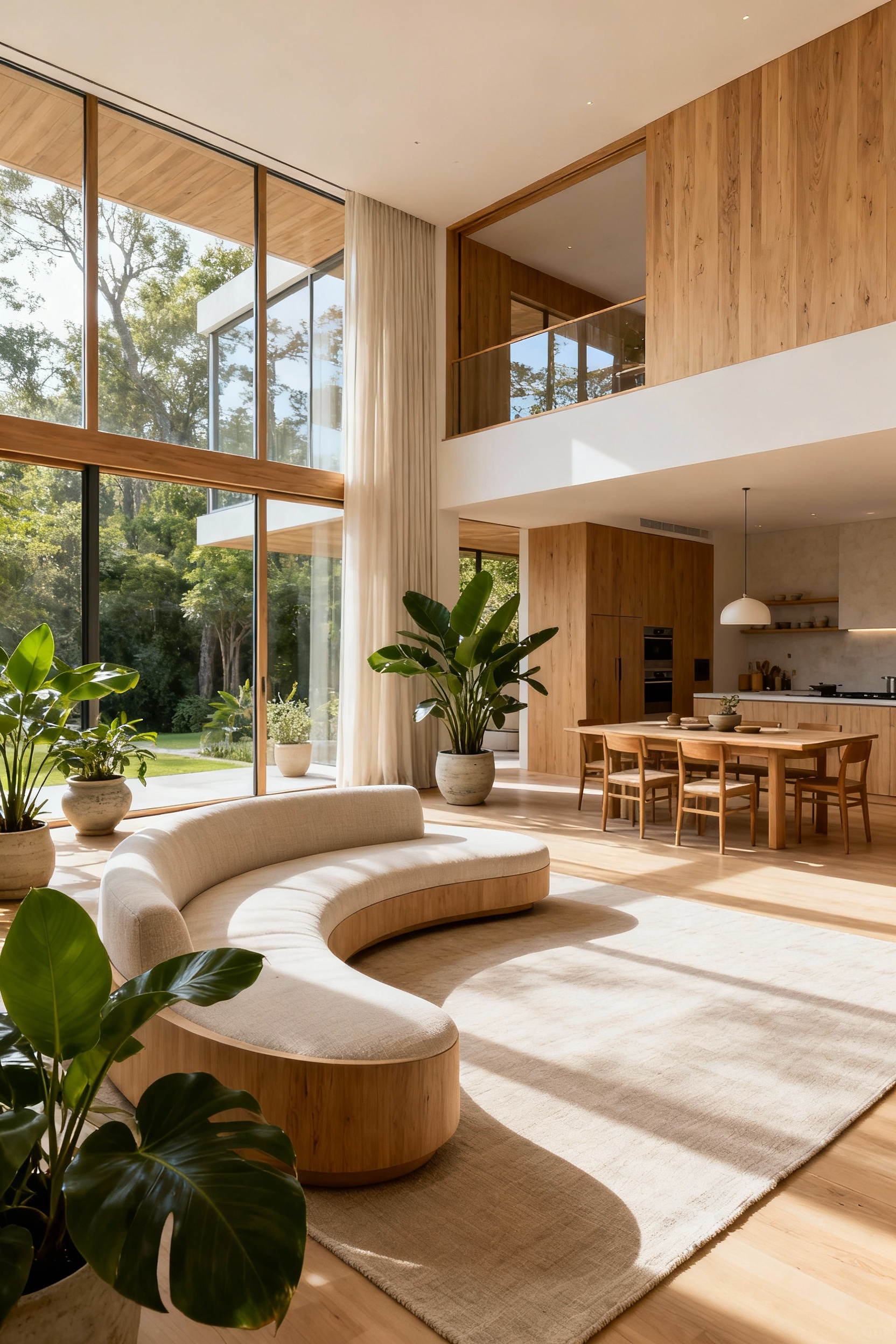
However, a successful open-plan design requires thoughtful “soft zoning.” This is where you use furniture, rugs, or changes in ceiling height to delineate different functional areas without putting up walls. A large area rug can anchor a conversation zone, while a console table placed behind a sofa can create a subtle division between the living and dining areas. The goal is to achieve both cohesion and clarity, creating a space that feels both open and intuitively organized.
12. Activating Transitional Zones
The spaces between spaces—hallways, entryways, and passages—are often overlooked, but they are critical for creating a sense of uninterrupted flow. When these transitional zones are cluttered or poorly lit, they create a jarring experience that disrupts the home’s overall harmony. Activating them means treating them as integral parts of the design narrative.
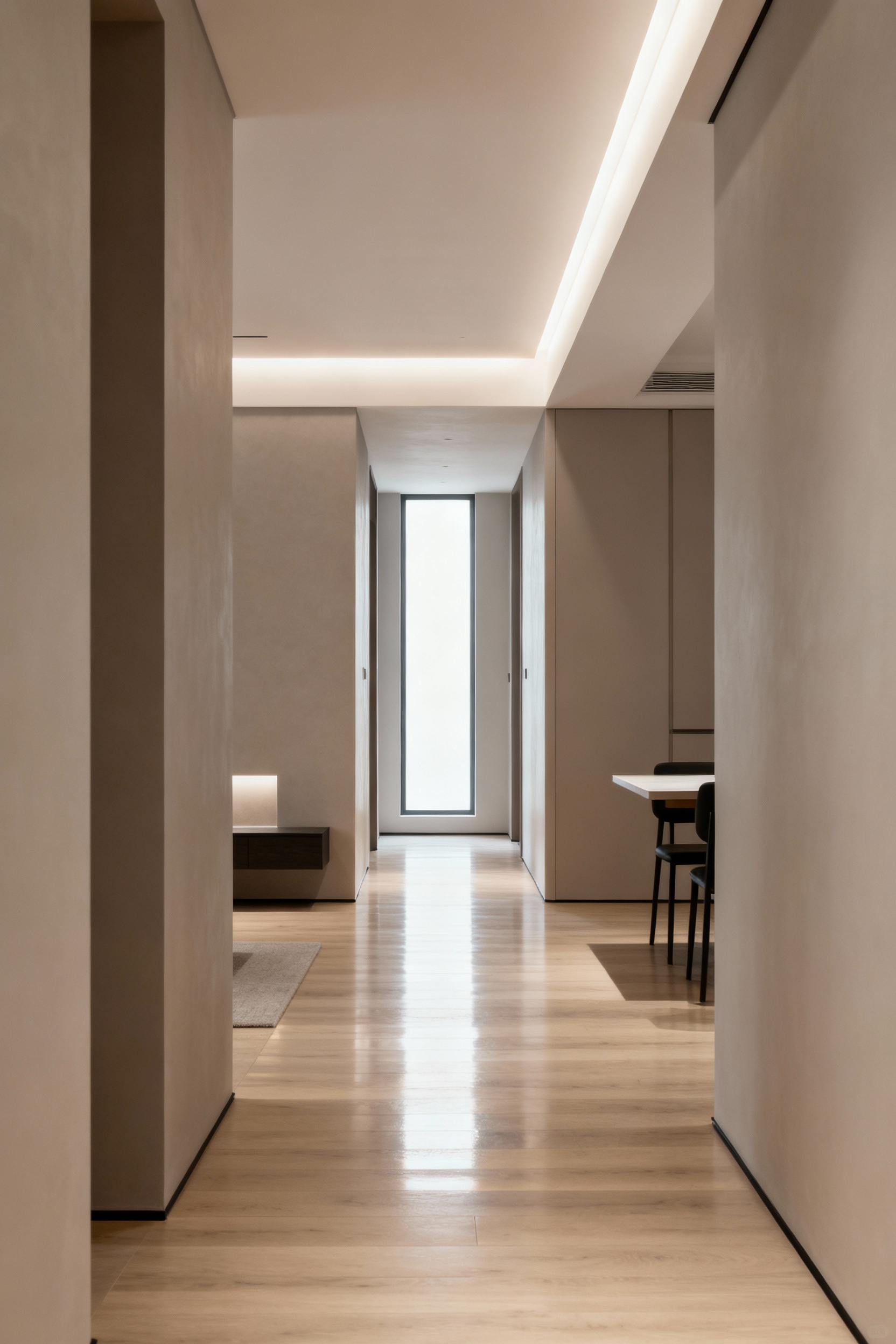
What I focus on is creating visual continuity. Using the same flooring and a consistent color palette between the living room and adjacent areas helps dissolve the boundaries and makes the entire home feel larger and more cohesive. In one project, we replaced a solid door with a pocket door made of fluted glass, which maintained a sense of separation when needed but allowed light and a sense of connection to flow through even when closed. It’s these thoughtful details in the “in-between” spaces that elevate the experience of moving through a home.
13. Designing a ‘Sacred Pause’ Nook
In our perpetually “on” world, we desperately need places for quiet refuge. I firmly believe every living room should have a small, dedicated zone designed for a ‘sacred pause’. This doesn’t have to be a large area; a comfortable armchair in a quiet corner, a window seat with a view of the sky, or even a simple floor cushion can suffice. The key is intention—this is a space designated for quiet, for reading, for meditation, for simply being.
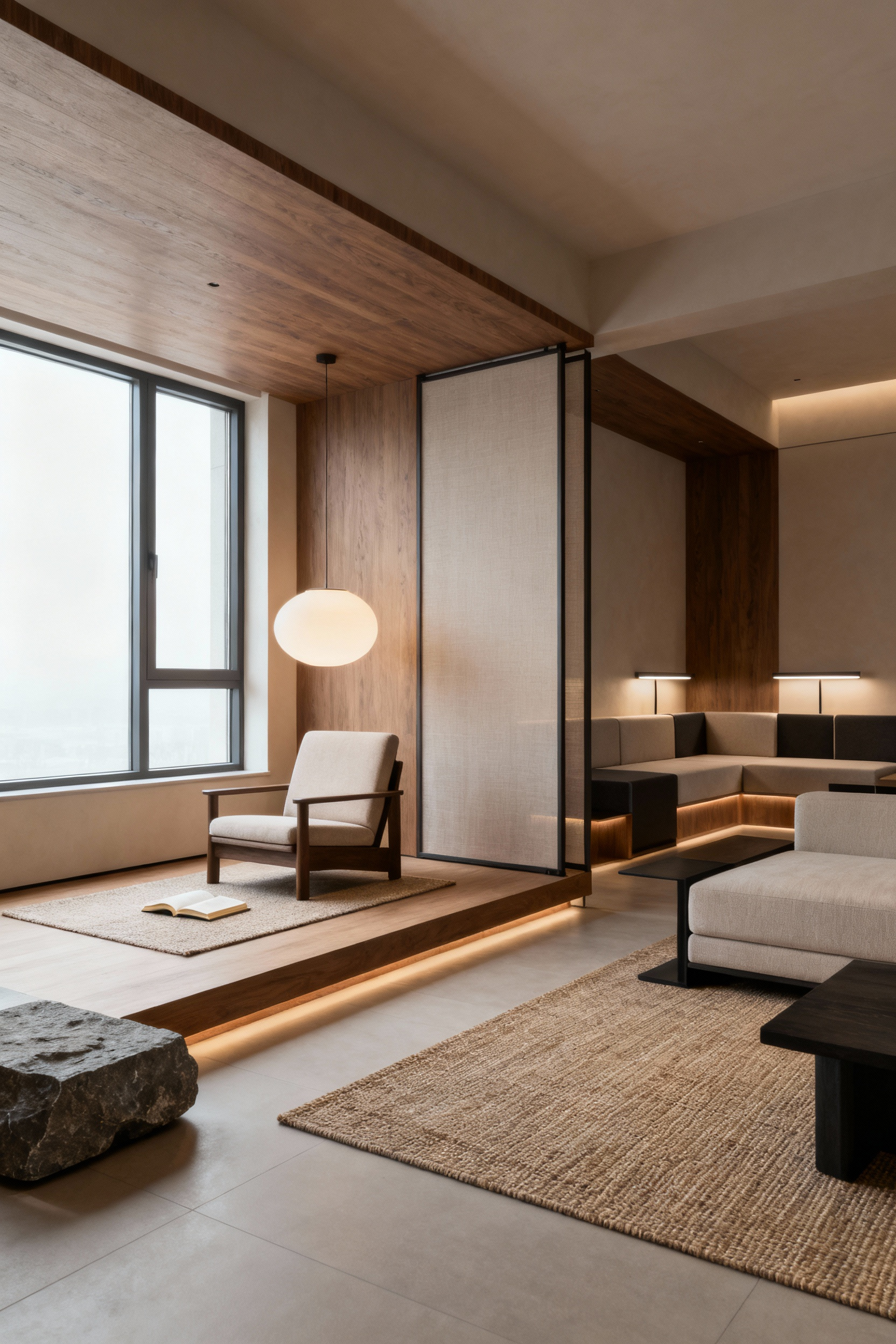
From my work in mindful space planning, this small act of carving out a place for stillness can be transformative. We signal to ourselves that rest is not a luxury but a necessity. By outfitting this nook with elements that promote calm—a soft throw, a personal object, a dedicated warm light—we create a powerful anchor for mindfulness in the heart of the home. It’s a physical invitation to disconnect from the chaos and reconnect with ourselves.
14. Integrating Ergonomics for Embodied Comfort
Wellness is not just psychological; it’s deeply physical. A beautiful sofa is useless if it hurts your back. True modern design prioritizes embodied comfort by integrating principles of ergonomics—the science of designing things for optimal human use. This means selecting furniture that supports the body’s natural posture and movements.
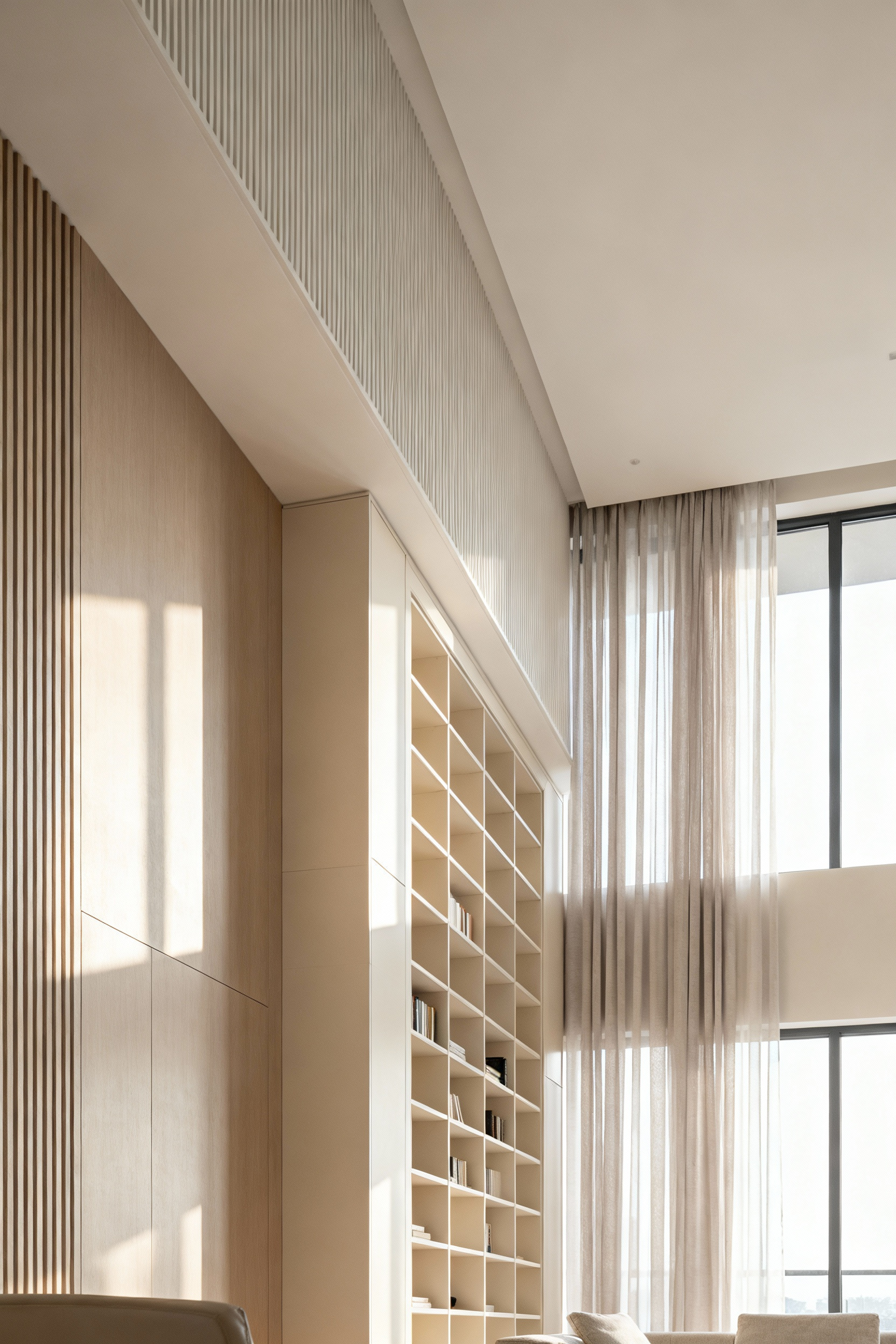
When choosing seating, consider the depth, height, and firmness. Can you sit with your feet flat on the floor? Does the backrest support your lumbar spine? Beyond the sofa, think about the height of your coffee table in relation to your seating. It’s a subtle but critical detail. In my practice, I emphasize that beautiful form and deep comfort are not mutually exclusive. A space that truly nurtures us is one that supports our physical bodies just as much as our aesthetic sensibilities.
Lifestyle Integration: Weaving Well-being into Daily Rituals
The final, and perhaps most profound, layer of wellness design is about how we live within the spaces we create. A thoughtfully designed living room becomes a partner in our well-being, providing the scaffolding for healthier habits and more meaningful rituals. This is where design moves from being a static background to a dynamic catalyst for a better life.
15. Curating a Personal Narrative
Your living room should tell your story. This is about moving beyond generic decor and curating a collection of art and objects that hold personal meaning. It could be a piece of art from a formative trip, a handmade ceramic from a local artisan, or a well-loved book passed down from a grandparent. These objects are not just decorations; they are artifacts of a life lived, imbued with memory and emotion.
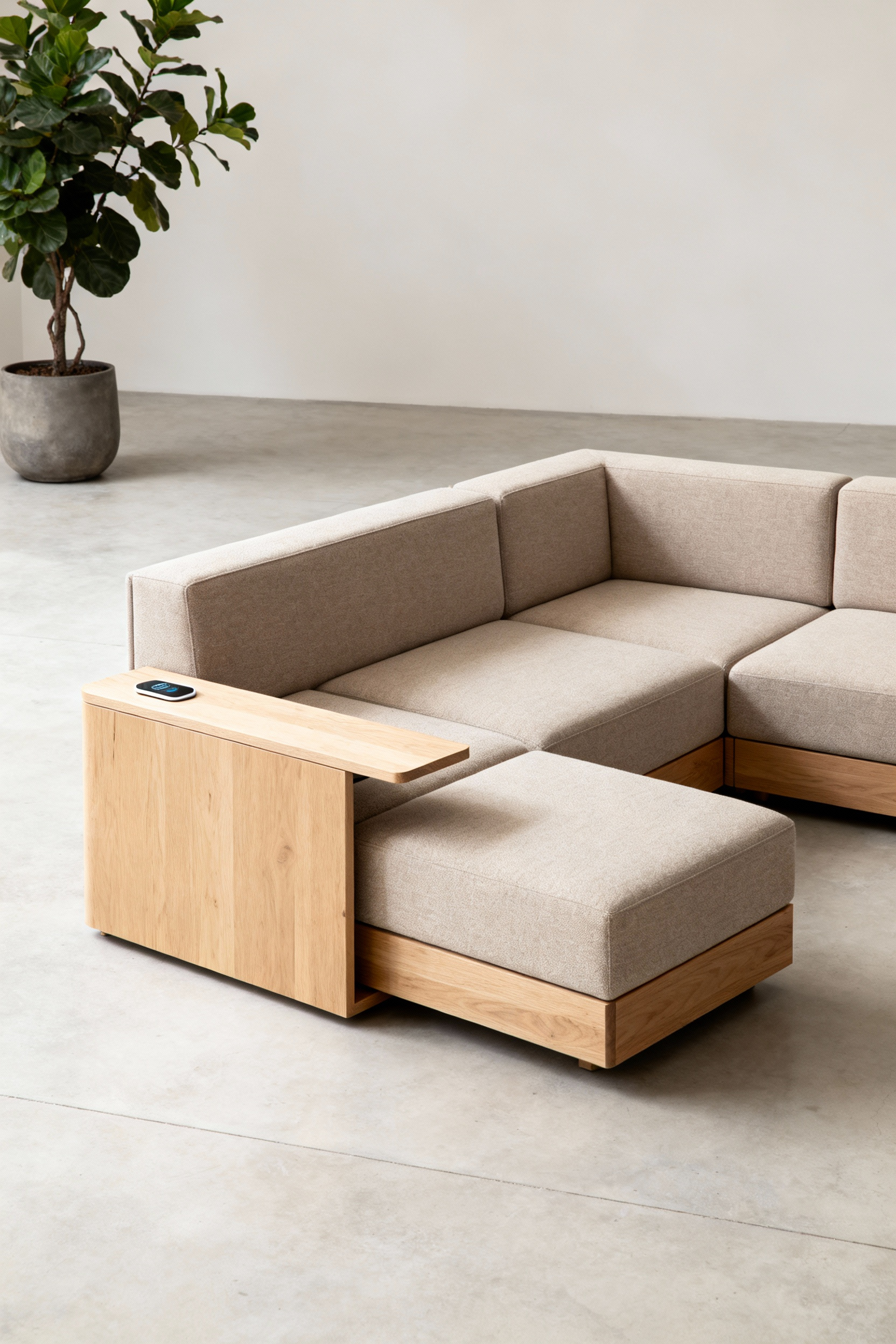
What I tell my clients is to think of themselves as the curator of their own personal museum. What story do you want this room to tell? Displaying objects that reflect your journey, your passions, and your connections fosters a powerful sense of identity and belonging. This authentic narrative is what transforms a house into a home and provides a daily reminder of what is truly valuable.
16. Designing for Social Connection
In an increasingly isolated world, our homes can be powerful tools for fostering genuine connection. The way seating is arranged has a profound impact on the quality of social interaction. Are chairs angled toward each other to encourage conversation, or are they all pointing at a television screen? Creating intimate seating groups, ensuring there’s a surface within reach for every seat, and providing comfortable, layered lighting all contribute to an atmosphere where people feel at ease and eager to connect.
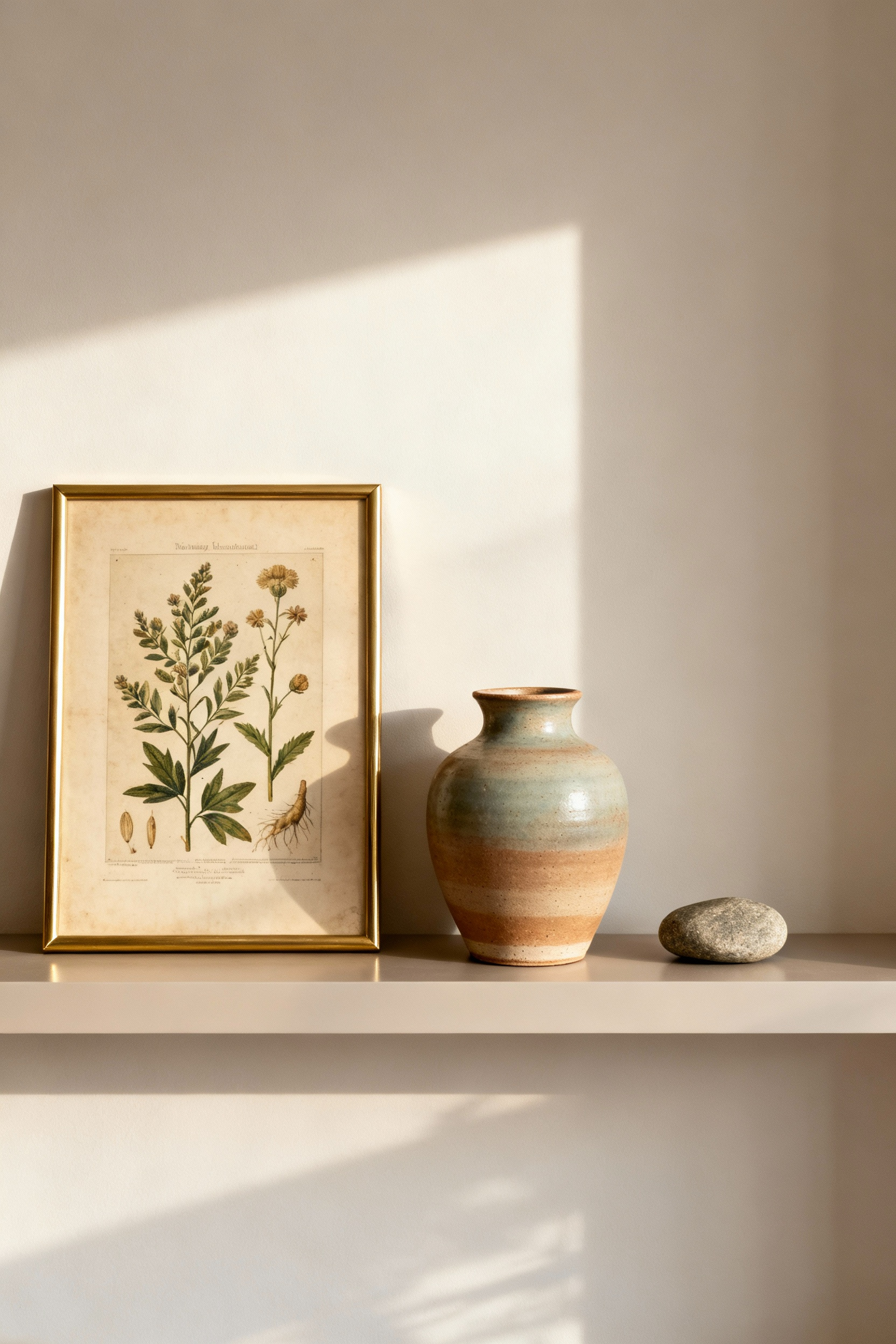
I’ve seen this work best when we prioritize human interaction over media consumption in the primary layout. A simple trick is to arrange sofas and chairs in a U-shape or an L-shape to create a natural conversational container. This doesn’t mean you can’t have a TV; it just means it shouldn’t be the unchallenged focal point around which all life orbits.
17. Establishing ‘Tech-Free’ Boundaries
Our living rooms have become inundated with screens, creating a constant hum of digital distraction that fragments our attention and elevates our stress. A truly modern, wellness-focused approach involves establishing clear boundaries for technology. This could mean designating the entire living room as a tech-free zone, or more practically, creating a beautiful cabinet where devices can be stored and charged out of sight.
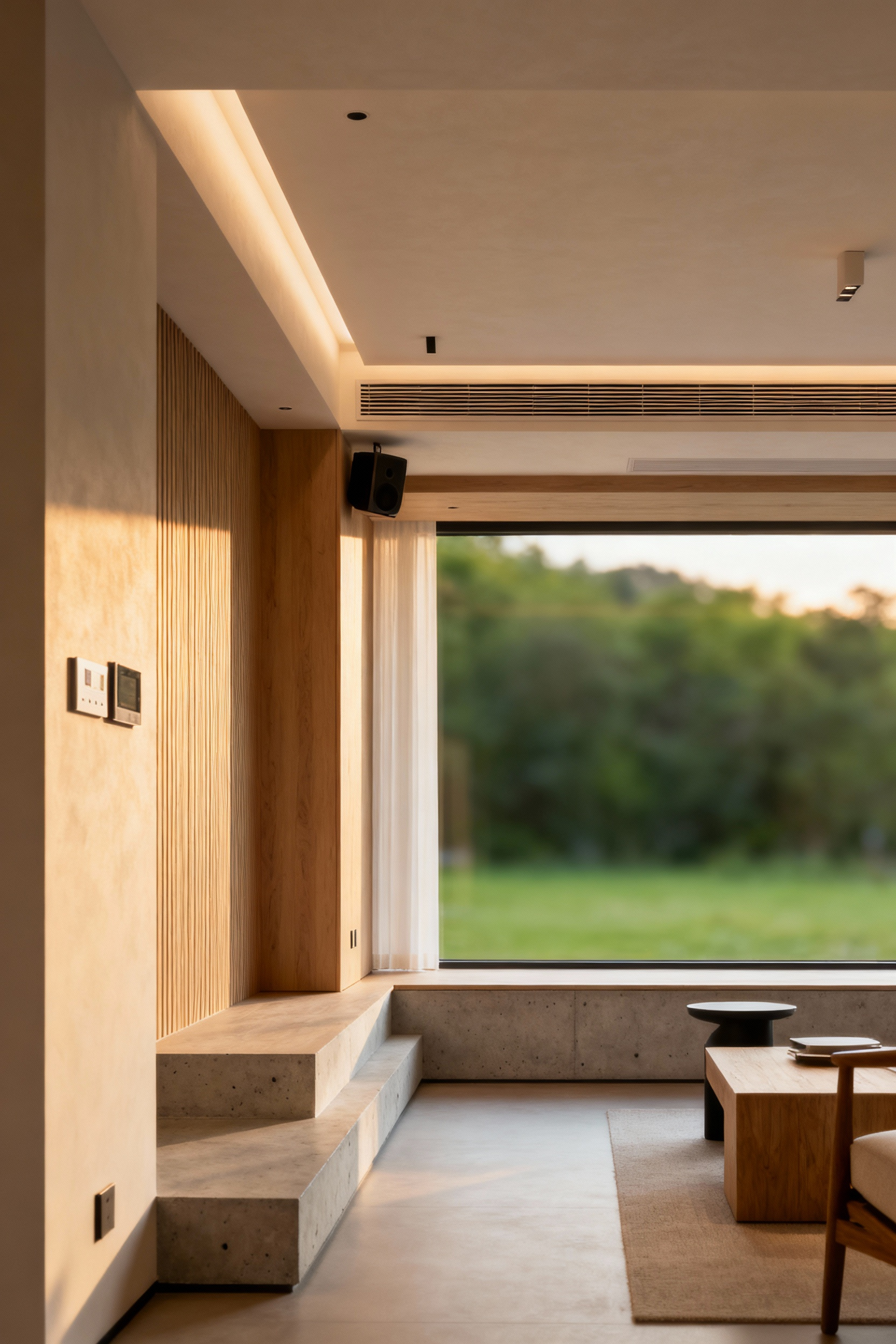
The act of physically putting away your phone creates a powerful psychological shift, signaling that it’s time to be present with your family, your book, or your own thoughts. I learned this from personal experience: creating a “charging station” in another room was the single best thing I did for my evening calm. By designing for digital detox, we reclaim our living rooms as spaces for genuine rest and connection.
18. Supporting Circadian Health
We’ve talked about lighting, but supporting our circadian rhythm—our body’s internal 24-hour clock—goes even further. It’s about designing a living room that syncs with the natural rhythms of the day. This means maximizing exposure to natural light in the morning and afternoon by using sheer curtains and arranging furniture to take advantage of windows. In the evening, it means reducing exposure to blue light from screens and overhead lights.
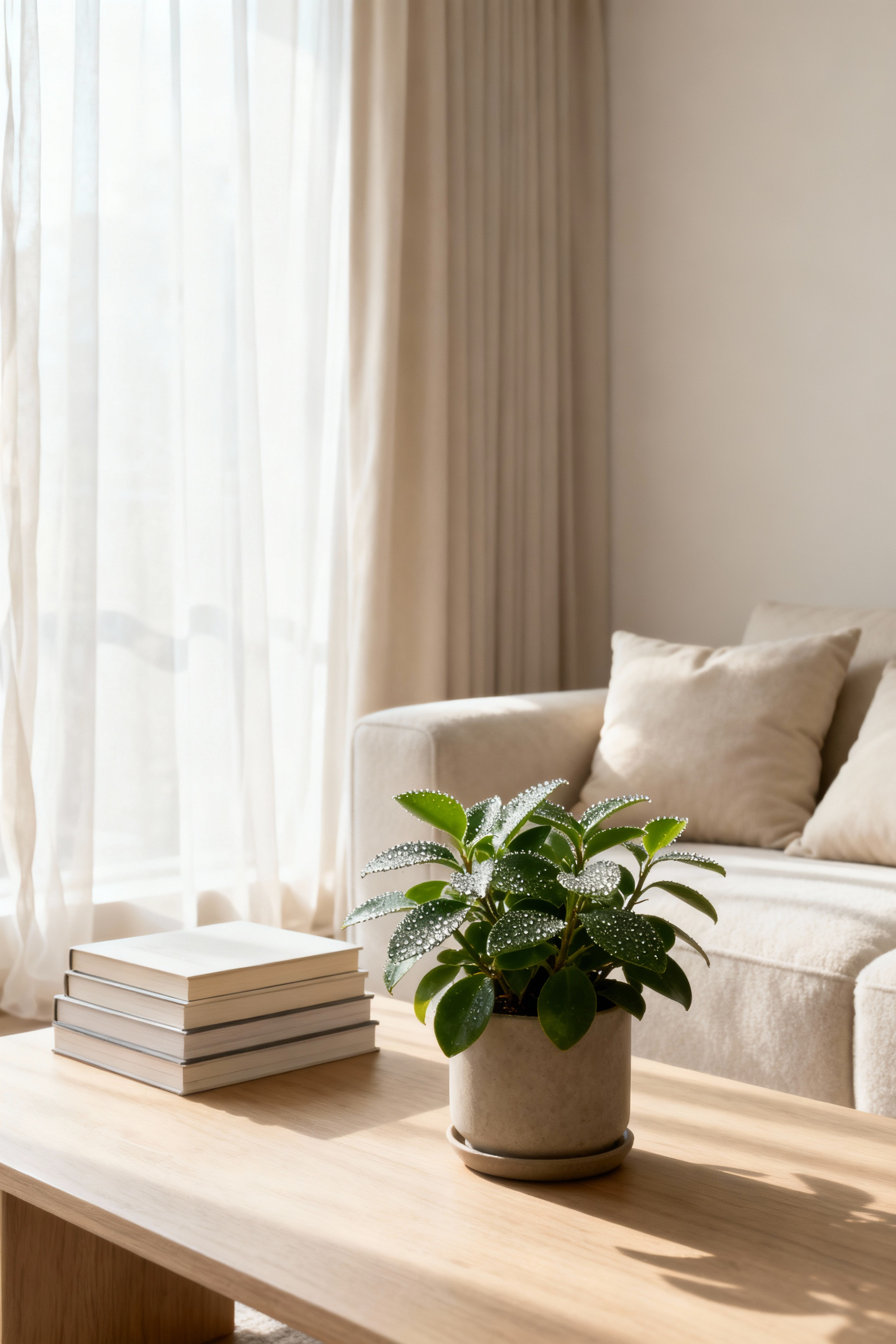
Implementing warm, low-level lighting after sunset—using table lamps and floor lamps instead of bright ceiling lights—helps signal to your body that it’s time to wind down, promoting the production of melatonin for better sleep. Automating your window shades to open with the sunrise and close after sunset can be a powerful, seamless way to align your home and your body with the natural cycle of the day.
19. Embracing Wabi-Sabi Imperfection
The Japanese philosophy of wabi-sabi finds beauty in imperfection, impermanence, and authenticity. In a world of flawless, mass-produced objects, embracing this principle can be a radical act of self-acceptance. It means celebrating the patina on a vintage leather chair, the crack in a beloved ceramic vase, or the natural imperfections in a slab of wood. It’s an antidote to the pressure of perfectionism.
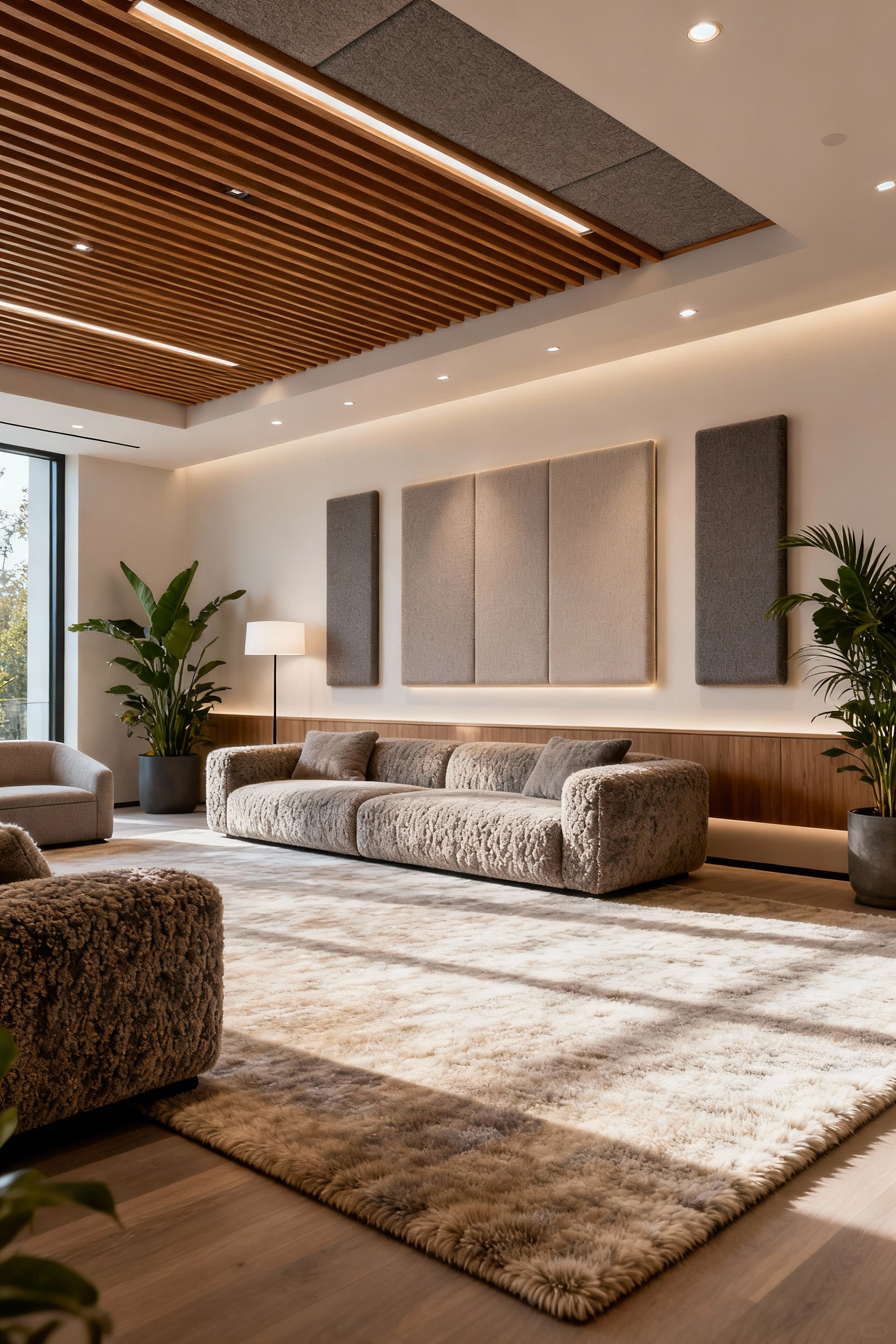
In my design work, incorporating wabi-sabi means favoring materials that age gracefully—like linen, leather, and unlacquered brass. It means choosing handmade over machine-made. This creates a room that feels lived-in, soulful, and forgiving. It acknowledges that a life well-lived leaves its marks, and those marks are part of the story and the beauty.
20. Cultivating Rituals Within the Space
A well-designed space becomes truly powerful when it inspires positive rituals. Your living room can be more than a place to sit; it can be a place to actively cultivate well-being. The “sacred pause” nook can become the site of a daily five-minute meditation. A comfortable sofa can invite a nightly ritual of reading a chapter of a book. An open floor space can be a place for a morning stretch.
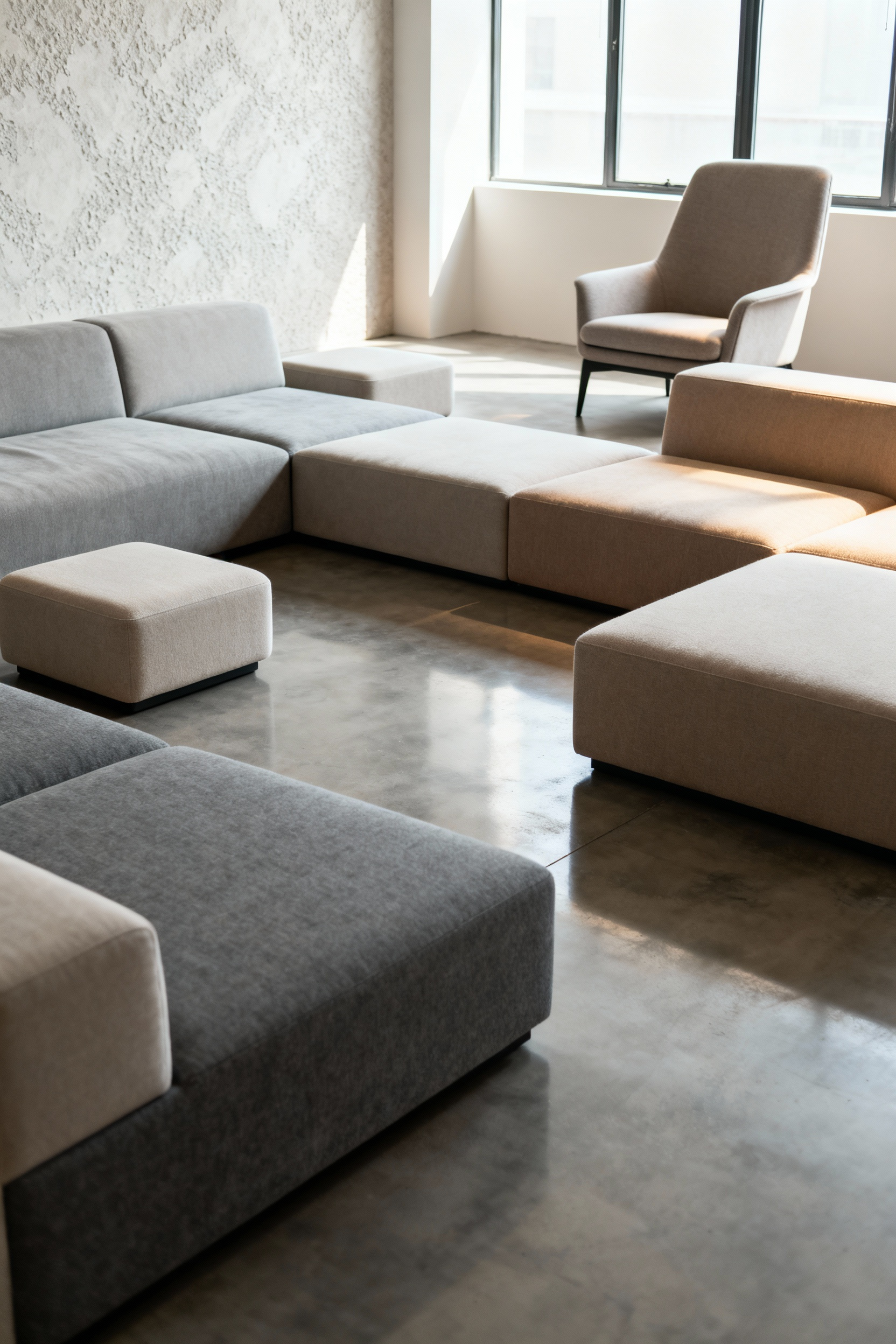
Your environment can be a powerful cue for your habits. By designing the space with these rituals in mind, you make it easier and more inviting to follow through on them. The space becomes your partner, gently nudging you toward the practices that nourish you. This is the ultimate goal of wellness design: to create a home that not only houses you, but actively helps you flourish.
